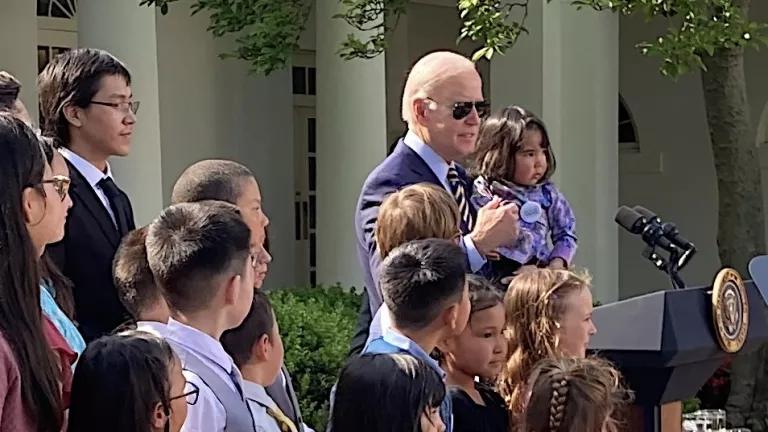The BLM recently issued a new Instruction Memorandum to its field offices. This IM establishes policy for reducing preventable wildlife mortality, increasing protection of livestock, and increasing human health and safety around oil and gas facilities.
The IM points out the risks of open air waste pits--risks that have been well documented. NRDC and our partners called for the BLM to ban open air waste pits in our recent comments on the BLM's proposed fracking rules (and we have also called for the EPA to ban them nationwide). The economical alternative to pits is something called a "closed-loop system" that uses enclosed steel tanks instead of pits to store potentially toxic waste.
The BLM IM states that : "Closed or semi-closed loop systems minimize waste, livestock and wildlife entry, fugitive emissions that may affect air quality, and the risk of groundwater contamination. In addition, the use of tanks or dry cuttings pits, in place of open fluids pits, can result in reduced initial surface disturbance and expedited interim reclamation." We agree that open air pits present a multitude of very serious risks to clean water, clean air, wildlife, wildlands, and human health.
The BLM goes on to say that field offices "should encourage operators to use closed tanks and closed loop or semi-closed loop systems," and if an operator wants to use open pits or open tanks, then the BLM needs to analyze that approach through the review process that is conducted under the National Environmental Policy Act (NEPA), and the BLM must consider alternatives, or mitigation options for the open pits or tanks.
That all might sound good. While we are pleased that the BLM has acknowledged all the risks presented by shoddy waste management systems for what can be extremely toxic waste, we are disappointed that these methods are still left as an option for oil and gas companies. The BLM has characterized these risks as “preventable” -- but isn’t taking the concrete action necessary to ensure they are prevented. The BLM is in the midst of a rulemaking where it can and should prohibit these dangerous methods.
The new IM also discusses the importance of secondary containment systems for tanks, methods to keep birds and bats away from from dangerous exhaust stacks, and marking fences that can endanger ground-nesting birds like sage grouse. These are all things that should also be required, not just encouraged. Requiring all of these practices--well known to protect natural resources--would not only protect wildlife, human health, and the environment, but would save the BLM from some additional NEPA review.




